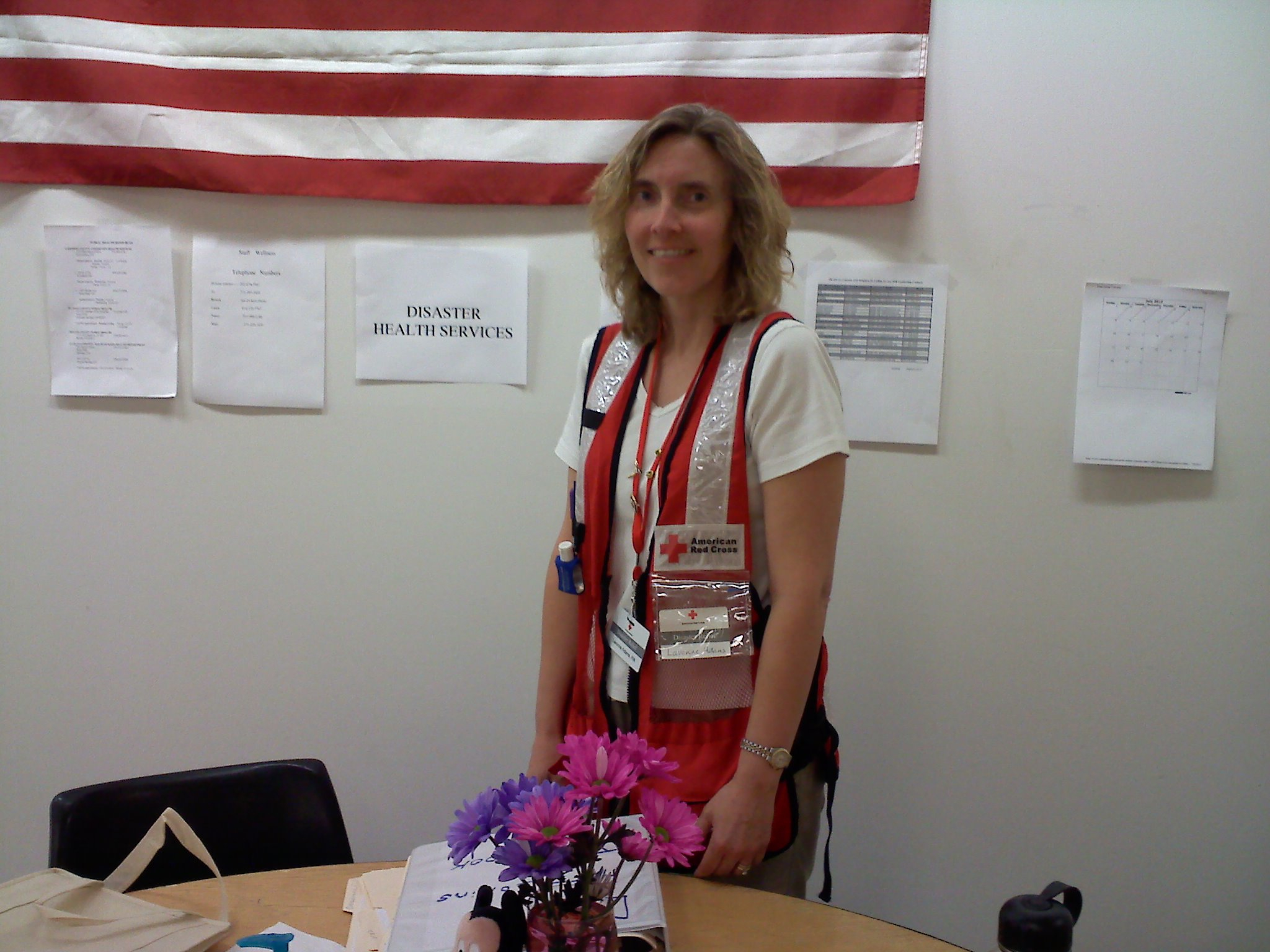Lending a hand
Nursing professor Lavonne Adams helps victims of Colorado fires

Lavonne Adams, associate professor in the Harris College of Nursing and Health Sciences, worked with the Red Cross in Colorado this month.
Lending a hand
Nursing professor Lavonne Adams helps victims of Colorado fires
Lavonne Adams, associate professor in the Harris College of Nursing and Health Sciences, researches emergency response and disaster management. She recently returned from Fort Collins, Colo.,where she was working with the American Red Cross’s efforts to help those affected by devastating fires.
Working in the Red Cross’s Service Delivery Center, she was part of one of the community outreach teams that met with survivors, provided information about the organization’s services and assisted in meeting mental health and physical health needs in the field as needed.
How is the Red Cross helping people deal with the disaster?
Adams: Initially, the Red Cross provided shelter and feeding for those who evacuated from the fire zone. As time progressed and people were able to find housing (or return to their homes), the Service Delivery Center was set up to provide a “one stop shop” for those affected by the fires to meet with the Red Cross and multiple other agencies who provide various types of disaster-related assistance. Specifically, the Red Cross provides some financial assistance for those affected by disaster; financial assistance may be provided to assist with such disaster-related losses as lost medications, eyeglasses, or other medical equipment.
With the heat and smoke, is it a challenge for residents and firefighters to cope?
Adams: Residents were not permitted to return to the affected area until the fire reached a certain level of containment. Once residents are permitted to return to their property, they faced the challenge of sifting through the debris. Anyone sifting through debris needs to wear gloves, mask and protective eye wear to protect themselves from the ashes. It is important to be alert for any soft spots in the terrain due to the fire and also for any weakened trees that could fall. With the added challenge of unseasonable heat, anyone working outside needs to stay hydrated with plenty of water and take breaks as needed. As the outreach teams went out, they each provided water, snacks and reminders to residents of how they could stay safe.
Where do you start with a family who has lost everything?
Adams: We start with the basics: Are they safe? We have to ensure that they have shelter, food, water and clothing; we also assess if their essential physical and emotional health needs are met. If they are injured or ill, we assess them to determine if they can be treated onsite or if they need to be referred to the hospital or some other level of care. Finally, we ask them to look at what their resources are so we can help determine whether they need additional support from the Red Cross or one of many other agencies that provide assistance to disaster survivors.
How is dealing with fire different from other types of disasters?
Adams: Fires may occur suddenly with little to no warning, or they can spread with a few hours’ notice. In any case, it is essential for people to be prepared in case of evacuation. They should have an emergency communication plan so they can connect with family and friends after evacuation, an emergency supply of food, water and essential supplies to take with them, and copies of important documents (proof of home ownership, birth certificate, etc.). Don’t forget about pets and livestock — it is important to have an evacuation plan for them as well.
What have you learned from this experience?
Adams: Communities can be very resilient. I have always believed that people who experience disasters are survivors rather than victims. That point was illustrated clearly when I visited one of the affected neighborhoods with the outreach team. The neighbors were banding together to protect the area from erosion (due to a combination of ash-laden terrain and heavy rains). They didn’t expect help from anyone — they believed that they should help each other, so there they were. These survivors were a textbook example of resilience.
Do you have any other thoughts/observations?
Adams: Disaster response is not the role of just one agency. Effective disaster response involves community members themselves as well as collaboration and cooperation from the various organizations that provide disaster assistance.
On the Web:
TCU alums Doug ’80 and Pam Bates Nuenke ’81 lost their home near Colorado Springs

Your comments are welcome
Comments
Related Reading:
Campus News: Alma Matters
From Application to Admission
Amid an increasingly selective admission process, Heath Einstein leads the team that builds the TCU community of the future.
Campus News: Alma Matters
From the Chancellor
Chancellor Victor J. Boschini, Jr., identifies what made TCU and its sesquicentennial so memorable.